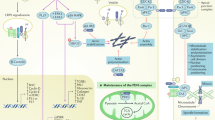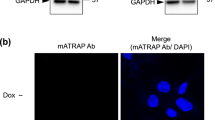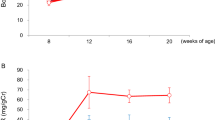Abstract
The multiligand receptor of the immunoglobulin superfamily, receptor for advanced glycation endproducts (RAGE), is a signal transduction receptor that binds advanced glycation endproducts, certain members of the S100/calgranulin family of proteins, high mobility group box 1 (HMGB1), advanced oxidation protein products, and amyloid (β-sheet fibrils). Initial studies investigating the role of RAGE in renal dysfunction focused on diabetes. However, RAGE also has roles in the pathogenesis of renal disorders that are not associated with diabetes, such as obesity-related glomerulopathy, doxorubicin-induced nephropathy, hypertensive nephropathy, lupus nephritis, renal amyloidosis, and ischemic renal injuries. Experiments that have employed transgenic mouse models, pharmacological blockade of RAGE, or genetic deletion or modification of RAGE indicate that modulation of RAGE expression or function affects the functional and pathological properties of these nephropathies. Accumulating evidence links RAGE to the pathogenesis of nephropathies, indicating that antagonism of RAGE might be a strategy for the treatment of chronic kidney disease.
Key Points
-
The receptor for advanced glycation endproducts (RAGE) is a multiligand receptor and a member of the immunoglobulin superfamily of cell surface molecules
-
RAGE ligands include advanced glycation endproducts, advanced oxidation protein products, certain members of the S100/calgranulin family, HMGB1, and certain forms of amyloid (β-sheet fibrils)
-
RAGE is normally expressed at low levels by podocytes, glomerular endothelial cells, and other cells of the kidney; RAGE expression is increased in both animal and human nephropathies
-
Pharmacological antagonism or genetic deletion of RAGE is highly protective against nephropathy induced by diabetes or doxorubicin
-
Studies in patients and in animal models implicate RAGE in the pathogenesis of nephropathies that are not associated with diabetes, such as lupus nephritis, obesity-related glomerulopathy, and hypertensive nephropathy
-
RAGE may be involved in varying stages of nephropathies, for example, in the early initiation stages by mediating podocyte stress, and in later stages, by amplifying inflammatory pathways
This is a preview of subscription content, access via your institution
Access options
Subscribe to this journal
Receive 12 print issues and online access
$209.00 per year
only $17.42 per issue
Buy this article
- Purchase on Springer Link
- Instant access to full article PDF
Prices may be subject to local taxes which are calculated during checkout



Similar content being viewed by others
References
Yan, S. F., Du Yan, S., Ramasamy, R. & Schmidt, A. M. Tempering the wrath of RAGE: an emerging therapeutic strategy against diabetic complications, neurodegeneration, and inflammation. Ann. Med. 41, 408–422 (2009).
Negre-Salvayre, A., Salvayre, R., Auge, N., Pamplona, R. & Portero-Otín, M. Hyperglycemia and glycation in diabetic complications. Antioxid. Redox Signal. 11, 3071–3109 (2009).
Vlassara, H. et al. Role of oxidants/inflammation in declining renal function in chronic kidney disease and normal aging. Kidney Int. Suppl. 114, S3–S11 (2009).
Anderson, M. M., Requena, J. R., Crowley, J. R., Thorpe, S. R. & Heinecke, J. W. The myeloperoxidase system of human phagocytes generates Nepsilon-(carboxymethyl)lysine on proteins: a mechanism for producing advanced glycation end products at sites of inflammation. J. Clin. Invest. 104, 103–113 (1999).
Chang, J. S. et al. Oxygen deprivation triggers upregulation of early growth response-1 by the receptor for advanced glycation end products. Circ. Res. 102, 905–913 (2008).
Ramasamy, R., Yan, S. F. & Schmidt, A. M. RAGE: therapeutic target and biomarker of the inflammatory response: the evidence mounts. J. Leukoc. Biol. 86, 505–512 (2009).
Guo, Z. J. et al. Advanced oxidation protein products activate vascular endothelial cells via a RAGE-mediated signaling pathway. Antioxid. Redox Signal. 10, 1699–1712 (2008).
Asayama, K. et al. Antioxidant enzymes and lipoperoxides in blood in uremic children and adolescents. Free Radic. Biol. Med. 9, 105–109 (1990).
Hirasawa, Y. et al. Pioglitazone improves obesity type diabetic nephropathy: relation to the mitigation of renal oxidative reactions. Exp. Anim. 57, 423–432 (2008).
Guo, J. et al. RAGE mediates podocyte injury in adriamycin-induced glomerulosclerosis. J. Am. Soc. Nephrol. 19, 961–972 (2008).
Tanji, N. et al. Expression of advanced glycation end products and their cellular receptor RAGE in diabetic nephropathy and nondiabetic renal disease. J. Am. Soc. Nephrol. 11, 1656–1666 (2000).
Linden, E. et al. Endothelial dysfunction in patients with chronic kidney disease results from advanced glycation end product (AGE)-mediated inhibition of endothelial nitric oxide synthase through RAGE activation. Clin. J. Am. Soc. Nephrol. 3, 691–698 (2008).
Matsunaga, N. et al. Advanced glycation end product is implicated in amyloid-related kidney complications. Scand. J. Clin. Lab. Invest. 65, 263–271 (2005).
Yamamoto, Y. et al. Development and prevention of advanced diabetic nephropathy in RAGE-overexpressing mice. J. Clin. Invest. 108, 261–268 (2001).
Wendt, T. M. et al. RAGE drives the development of glomerulosclerosis and implicates podocyte activation in the pathogenesis of diabetic nephropathy. Am. J. Pathol. 162, 1123–1137 (2003).
Flyvbjerg, A. et al. Long-term renal effects of a neutralizing RAGE antibody in obese type 2 diabetic mice. Diabetes 53, 166–172 (2004).
Jensen, L. J. et al. Renal effects of a neutralising RAGE-antibody in long-term streptozotocin-diabetic mice. J. Endocrinol. 188, 493–501 (2006).
Myint, K. M. et al. RAGE control of diabetic nephropathy in a mouse model: effects of RAGE gene disruption and administration of low-molecular weight heparin. Diabetes 55, 2510–2522 (2006).
Inagi, R. et al. A severe diabetic nephropathy model with early development of nodule-like lesions by megsin overexpression in RAGE/iNOS transgenic mice. Diabetes 55, 356–366 (2006).
States AOE-SRDITU: US Renal Data System: USRDS 2002 Annual Data Report (National Institutes of Health, National Institute of Diabetes and Digestive and Kidney Diseases, Bethesda MD, USA, 2002).
Skyler, J. S. et al. Intensive glycemic control and the prevention of cardiovascular events: implications of the ACCORD, ADVANCE, and VA Diabetes Trials. J. Am. Coll. Cardiol. 53, 298–304 (2009).
Mauer, M. et al. Renal and retinal effects of enalopril and losartan in type 1 diabetes. N. Engl. J. Med. 361, 40–51 (2009).
Horie, K. et al. Immunohistochemical colocalization of glycoxidation products and lipid peroxidation products in diabetic renal glomerular lesions. Implication for glycoxidative stress in the pathogenesis of diabetic nephropathy. J. Clin. Invest. 100, 2995–3004 (1997).
Stitt-Cavanagh, E., MacLeod, L. & Kennedy, C. The podocyte in diabetic kidney disease. ScientificWorldJournal 9, 1127–1139 (2009).
Basi, S. & Lewis, J. B. Microalbuminuria as a target to improve cardiovascular and renal outcomes. Am. J. Kidney Dis. 47, 927–946 (2006).
Li, J. J. et al. Podocyte biology in diabetic nephropathy. Kidney Int. Suppl. 106, S36–S42 (2007).
Pala, L. et al. Vascular endothelial growth factor receptor-2 and low affinity VEGF binding sites on human glomerular endothelial cells: biological effects and advanced glycosilation end products modulation. Microvasc. Res. 70, 179–188 (2005).
Brosius, F. C. 3rd et al. Mouse models of diabetic nephropathy. J. Am. Soc. Nephrol. 20, 2503–2512 (2009).
Nakagawa, T. et al. Diabetic endothelial nitric oxide synthase knockout mice develop advanced diabetic nephropathy. J. Am. Soc. Nephrol. 18, 539–550 (2007).
Kosugi, T. et al. Lowering blood pressure blocks mesangiolysis and mesangial nodules, but not tubulointerstitital injury, in diabetic eNOS knockout mice. Am. J. Pathol. 174, 1221–1229 (2009).
Zheng, S. et al. Development of late-stage diabetic nephropathy in OVE26 diabetic mice. Diabetes 53, 3248–3257 (2004).
Teiken, J. M., Audettey, J. L., Laturnus, D. I., Zheng, S., Epstein, P. N. & Carlson, E. C. Podocyte loss in aging OVE26 diabetic mice. Anat. Rec. (Hoboken) 291, 114–121 (2008).
Reiniger, N. et al. Deletion of the receptor for advanced glycation endproducts preserves renal function in the diabetic OVE26 mouse. Abstract, Annual Meeting American Society of Nephrology SA-PO2913 (2009).
Wang, Y., Wang, Y. P., Tay, Y. C. & Harris, D. C. Progressive adriamycin nephropathy in mice: sequence of histologic and immunohistochemical events. Kidney Int. 58, 1797–1804 (2000).
Koshikawa, M. et al. Role of p38 mitogen activated protein kinase activation in podocyte injury and proteinuria in experimental nephrotic syndrome. J. Am. Soc. Nephrol. 16, 2690–2701 (2005).
Yang, L., Zheng, S. & Epstein, P. N. Metallothionein over-expression in podocytes reduces adriamycin nephropathy. Free Radic. Res. 43, 174–182 (2009).
Gu, L. et al. Role of receptor for advanced glycation end-products and signaling events in advanced glycation end-product-induced monocyte chemoattractant protein-1 expression in differentiated mouse podocytes. Nephrol. Dial. Transplant. 21, 299–313 (2006).
Lee, E. Y. et al. The monocyte chemoattractant protein-1/CCR2 loop, inducible by TGF-beta, increased podocyte motility and albumin permeability. Am. J. Physiol. Renal Physiol. 297, F85–F94 (2009).
Chuang, P. Y., Yu, Q., Fang, W., Uribarri, J. & He, J. C. Advanced glycation endproducts induce podocyte apoptosis by activation of the FOXO4 transcription factor. Kidney Int. 72, 965–976 (2007).
Coughlan, M. T. et al. RAGE-induced cytosolic ROS promote mitochondrial superoxide generation in diabetes. J. Am. Soc. Nephrol. 20, 742–752 (2009).
Rüster, C. et al. Angiotensin II upregulates RAGE expression on podocytes: role of AT2 receptors. Am. J. Nephrol. 29, 538–550 (2009).
Tsuji, H. et al. Ribozyme targeting of receptor for advanced glycation endproducts in mouse mesangial cells. Biochem. Biophys. Res. Commun. 245, 583–588 (1998).
Oldfield, M. D. et al. Advanced glycation end products cause epithelial-myofibroblast transdifferentiation via the receptor for advanced glycation end products (RAGE). J. Clin. Invest. 108, 1853–1863 (2001).
Hou, F. F. et al. Enhanced expression of receptor for advanced glycation end products in chronic kidney disease. J. Am. Soc. Nephrol. 15, 1889–1896 (2004).
Yan, S. D. et al. RAGE and amyloid beta peptide neurotoxicity in Alzheimer's disease. Nature 382, 685–691 (1996).
Yan, S. D. et al. Receptor-dependent cell stress and amyloid accumulation in systemic amyloidosis. Nat. Med. 6, 643–651 (2000).
Bucciarelli, L. G. et al. RAGE and modulation of ischemic injury in the diabetic myocardium. Diabetes 57, 1941–1951 (2008).
Bucciarelli, L. G. et al. Receptor for advanced-glycation end products: key modulator of myocardial ischemic injury. Circulation 113, 1226–1234 (2006).
Zeng, S. et al. Receptor for advanced glycation end product (RAGE)-dependent modulation of early growth response-1 in hepatic ischemia/reperfusion injury. J. Hepatol. 50, 929–936 (2009).
Sternberg, D. I. et al. Blockade of receptor for advanced glycation endproduct attenuates pulmonary reperfusion injury in mice. J. Thorac. Cardiovasc. Surg. 136, 1576–1585 (2008).
Hassid, B. G. et al. Neuronal RAGE expression modulates severity of injury following transient focal cerebral ischemia. J. Clin. Neurosci. 16, 302–306 (2009).
Muhammad, S. et al. The HMGB1 receptor RAGE mediates ischemic brain damage. J. Neurosci. 28, 12023–12031 (2008).
Lu, C. Y., Hartono, J., Senitko, M. & Chen, J. The inflammatory response to ischemic acute kidney injury: a result of the 'right stuff' in the 'wrong place'? Curr. Opin. Nephrol. Hypertens. 16, 83–89 (2007).
Rauvala, H. & Rouhianen, A. Physiological and pathophysiological outcomes of the interactions of HMGB1 with cell surface receptors. Biochim. Biophys. Acta 1799, 164–170 (2010).
Leemans, J. C. et al. Renal-associated TLR2 mediates ischemia/reperfusion injury in the kidney. J. Clin. Invest. 115, 2894–2903 (2005).
Shigeoka, A. A. et al. TLR2 is constitutively expressed within the kidney and participates in ischemic renal injury through both MyD88-dependent and -independent pathways. J. Immunol. 178, 6252–6258 (2007).
Müller-Krebs, S. et al. Glucose degradation products result in cardiovascular toxicity in a rat model of renal failure. Perit. Dial. Int. 30, 35–40 (2010).
Rudofsky, G. Jr et al. A 63bp deletion in the promoter of RAGE correlates with a decreased risk for nephropathy in patients with type 2 diabetes. Exp. Clin. Endocrinol. Diabetes 112, 135–141 (2004).
Prevost, G. et al. Polymorphisms of the receptor for advanced glycation endproducts (RAGE) and the development of nephropathy in type 1 diabetic patients. Diabetes Metab. 31, 35–39 (2005).
Lindholm, E. et al. The -374 T/A polymorphism in the gene encoding RAGE is associated with diabetic nephropathy and retinopathy in type 1 diabetic subjects. Diabetologia 49, 2745–2755 (2006).
Kanková, K., Stejskalová, A., Hertlová, M. & Znojil, V. Haplotype analysis of the RAGE gene: identification of a haplotype marker for diabetic nephropathy in type 2 diabetes mellitus. Nephrol. Dial. Transplant. 20, 1093–1102 (2005).
Kalousová, M. et al. RAGE polymorphisms, renal function, and histological finding at 12 months after renal transplantation. Clin. Biochem. 42, 347–352 (2009).
Hofmann, M. A. et al. RAGE and arthritis: the G82S polymorphism amplifies the inflammatory response. Genes Immun. 3, 123–135 (2002).
Osawa, M. et al. De-N-glycosylation or G82S mutation of RAGE sensitizes its interaction with advanced glycation endproducts. Biochim. Biophys. Acta 1770, 1468–1474 (2007).
Hancock, D. B. et al. Meta-analysis of genome wide association studies identify multiple loci associated with pulmonary function. Nat. Genet. 42, 42–52 (2010).
Repapi, E. et al. Genome wide association study identifies five loci associated with lung function. Nat. Genet. 42, 36–44 (2010).
Yonekura, H., Yamamoto, Y., Sakurai, S., Watanabe, T. & Yamamoto, H. Roles of the receptor for advanced glycation endproducts in diabetes-induced vascular injury. J. Pharmacol. Sci. 97, 305–311 (2005).
Hudson, B. I. et al. Identification, classification, and expression of RAGE gene splice variants. FASEB J. 22, 1572–1580 (2008).
Raucci, A. et al. A soluble form of the receptor for advanced glycation endproducts (RAGE) is produced by proteolytic cleavage of the membrane-bound form by the sheddase a disintegrin and metalloprotease 10 (ADAM10). FASEB J. 22, 3716–3727 (2008).
Zhang, L. et al. Receptor for advanced glycation end products is subjected to protein ectodomain shedding by metalloproteinases. J. Biol. Chem. 283, 35507–35516 (2008).
Humpert, P. M. et al. Soluble RAGE but not endogenous secretory RAGE is associated with albuminuria in patients with type 2 diabetes. Cardiovasc. Diabetol. 6, 9 (2007).
Grossin, N. et al. Severity of diabetic microvascular complications is associated with low soluble RAGE level. Diabetes Metab. 34, 392–395 (2008).
Gohda, T. et al. Increased serum endogenous secretory receptor for advanced glycation endproducts (esRAGE) levels in type 2 diabetic patients with decreased renal function. Diabetes Res. Clin. Pract. 81, 196–201 (2008).
Kalousová, M. et al. Soluble receptor for advanced glycation end products in patients with decreased renal function. Am. J. Kidney Dis. 47, 406–411 (2006).
Kanková, K. et al. Soluble RAGE, diabetic nephropathy and genetic variability in the AGER gene. Arch. Physiol. Biochem. 114, 111–119 (2008).
Gaens, K. H. et al. Association of polymorphism in the receptor for advanced glycation end products (RAGE) gene with circulating RAGE levels. J. Clin. Endocrinol. Metab. 94, 5174–5180 (2009).
Forbes, J. M. et al. Modulation of soluble receptor for advanced glycation end products by angiotensin-converting enzyme-1 inhibition in diabetic nephropathy. J. Am. Soc. Nephrol. 16, 2363–2372 (2005).
Brosius, F. C. 3rd. New insights into the mechanisms of fibrosis and sclerosis in diabetic nephropathy. Rev. Endocr. Metab. Disord. 9, 245–254 (2008).
Han, K. H., Han, S. Y., Kim, H. S., Kang, Y. S. & Cha, D. R. Prolonged administration enhances the renoprotective effect of pentoxifylline via anti-inflammatory activity in streptozotocin-induced diabetic nephropathy. Inflammation doi:10.1007/s10753-009-9167-6.
Matavelli, L. C., Huang, J. & Siragy, H. M. (Pro)renin receptor contributes to diabetic nephropathy through enhancing renal inflammation. Clin. Exp. Pharmacol. Physiol. 37, 277–282 (2010).
Min, D. et al. Mesangial cell derived factors alter monocyte activation and function through inflammatory pathways: possible pathogenic role in diabetic nephropathy. Am. J. Physiol. Renal Physiol. 297, F1229–F1237 (2009).
Wu, J., Mei, C., Vlassara, H., Striker, G. E. & Zheng, F. Oxidative stress induced JNK activation contributes to proinflammatory phenotype of aging diabetic mesangial cells. Am. J. Physiol. Renal Physiol. 297, F1622–F1631 (2009).
Collison, K. S. et al. RAGE-mediated neutrophil dysfunction is evoked by advanced glycation end products (AGEs). J. Leukoc. Biol. 71, 433–444 (2002).
Schmidt, A. M. et al. Regulation of human mononuclear phagocyte migration by cell surface-binding proteins for advanced glycation end products. J. Clin. Invest. 91, 2155–2168 (1993).
Chen, Y. et al. Blockade of late stages of autoimmune diabetes by inhibition of the receptor for advanced glycation end products. J. Immunol. 173, 1399–1405 (2004).
Cataldegirmen, G. et al. RAGE limits regeneration after massive liver injury by coordinated suppression of TNF-alpha and NF-kappaB. J. Exp. Med. 201, 473–484 (2005).
Chen, Q., Dong, L., Wang, L., Kang, L. & Xu, B. Advanced glycation end products impair function of late endothelial progenitor cells through effects on protein kinase Akt and cyclooxygenase-2. Biochem. Biophys. Res. Commun. 381, 192–197 (2009).
Acknowledgements
The authors gratefully acknowledge funding from the US Public Health Service and the Juvenile Diabetes Research Foundation for the work discussed in this Review. The authors thank Ms Latoya Woods, Division of Surgical Science, Department of Surgery, Columbia University, College of Physicians & Surgeons, NY, USA, for her expert assistance in the preparation of this manuscript.
Author information
Authors and Affiliations
Corresponding author
Ethics declarations
Competing interests
The authors declare no competing financial interests.
Rights and permissions
About this article
Cite this article
D'Agati, V., Schmidt, A. RAGE and the pathogenesis of chronic kidney disease. Nat Rev Nephrol 6, 352–360 (2010). https://doi.org/10.1038/nrneph.2010.54
Published:
Issue Date:
DOI: https://doi.org/10.1038/nrneph.2010.54
This article is cited by
-
Progress and application of adipose-derived stem cells in the treatment of diabetes and its complications
Stem Cell Research & Therapy (2024)
-
An overview of the complex interaction between obesity and target organ dysfunction: focus on redox-inflammatory state
Nutrire (2023)
-
Signaling pathways in vascular function and hypertension: molecular mechanisms and therapeutic interventions
Signal Transduction and Targeted Therapy (2023)
-
Advanced glycation end products promote the progression of chronic kidney diseases by targeting calpain 6
Amino Acids (2023)
-
Stem cell-derived and circulating exosomal microRNAs as new potential tools for diabetic nephropathy management
Stem Cell Research & Therapy (2022)



